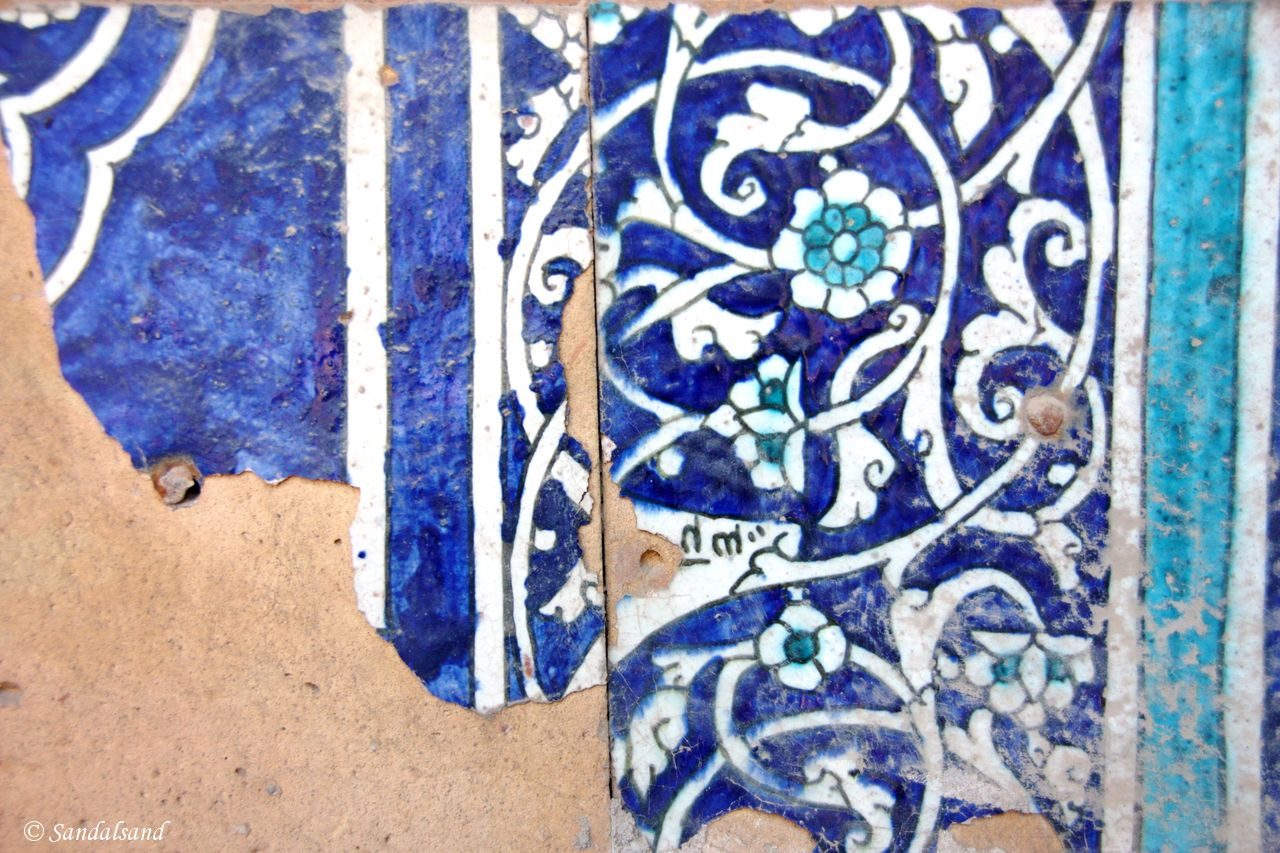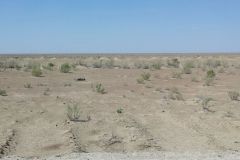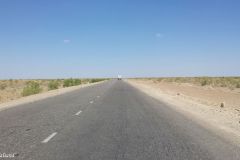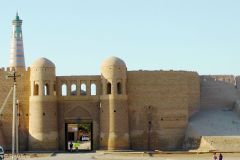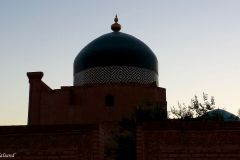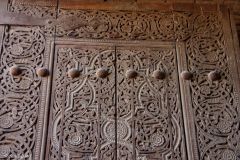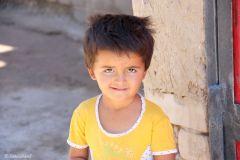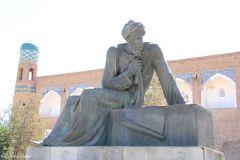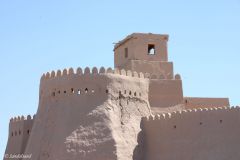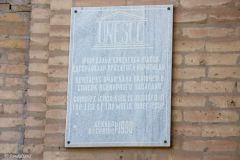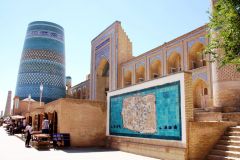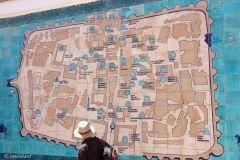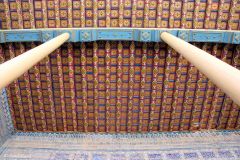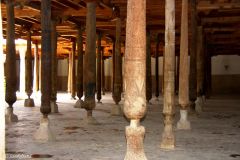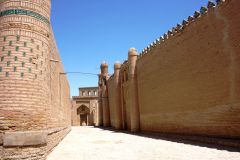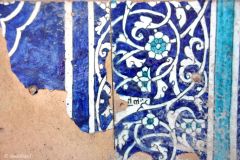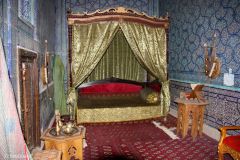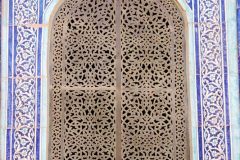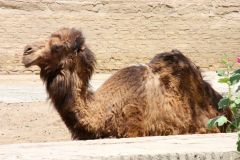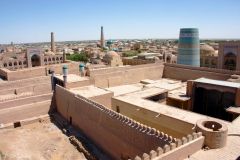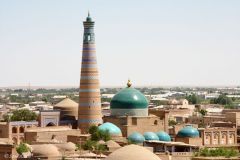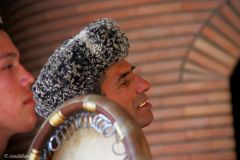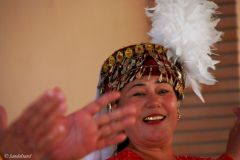Squeezed in between the Kyzylkum and Karakum deserts we find Khiva, or Itchan Kala as it was known when slaves were traded and silk passed by on camel caravans from China.
This is part of a series of articles from a journey to the Central Asian republics of Uzbekistan and Kyrgyzstan in June 2014.
Through the desert of Kyzylkum
The Amya Darya River
We are close to the banks of the great Amya Darya River. Here we arrived on a bus from Bukhara after a long day on the road, a journey that would have taken up to three weeks in the days of the caravans.
The desert was long, the landscape was flat and barren, and the road ran straight, endlessly. We only made a couple of stops, the last at this point where we could gaze over to the other side of the river, to Turkmenistan. The “stan”-countries are not easy to travel in, not even these days, but Turkmenistan beats them all.
Unfortunately the sealed-off country, hostile to any honest visitor, effectively barred my plans to visit Central Asia five years ago. Now I had returned, skipped Turkmenistan, apart from getting this view across to what is probably the second most bizarre government system in the world, after North Korea.
Urgench province and Khiva
Never mind, as the sun was setting we let the desert behind and approached a rare fertile area of Uzbekistan, drove through the boring provincial capital of Urgench, and parked outside one of the gates of Khiva. We were more than eager to see what was going on behind the massive wall of this fairytale city.
The most eager of my group, me included, could not resist the temptation to have a sneak view behind the walls. We returned the next morning with our guide and was more than intrigued.
This is what we saw.
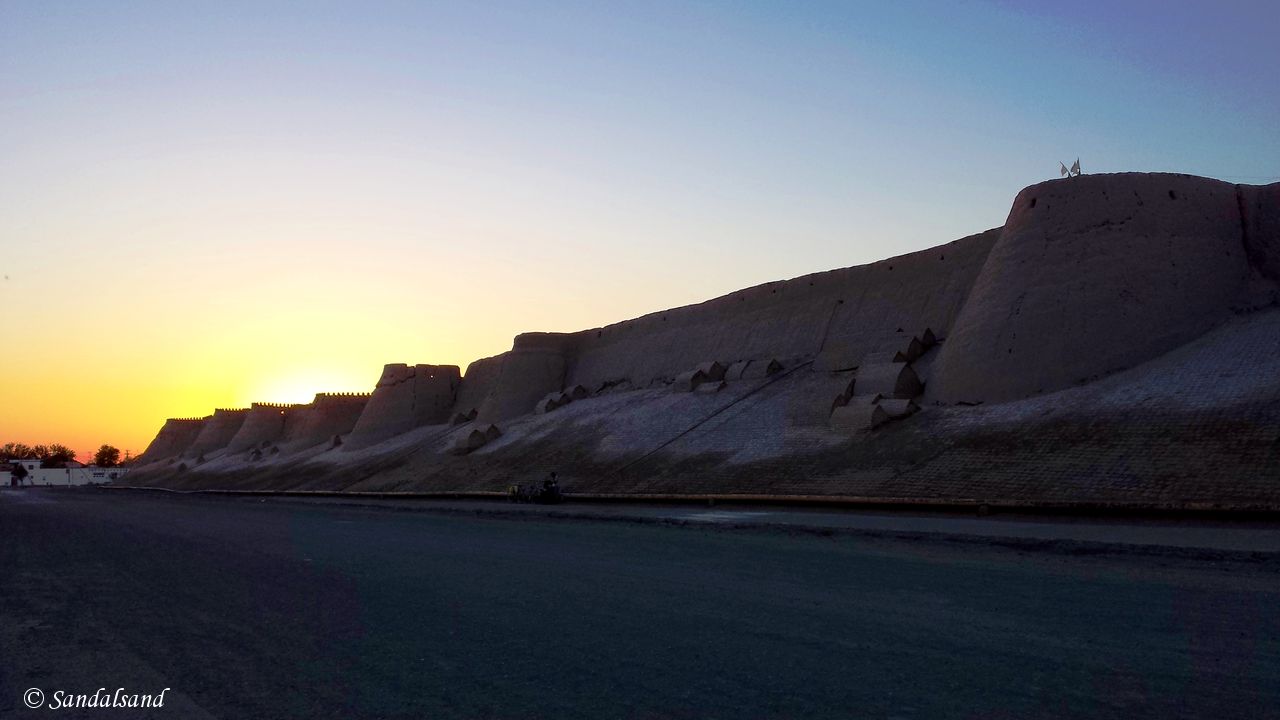
Map of sights inside Khiva
Click the markers or open the window in a new tab or window.
Itchan Kala – the outline
The history of Itchan Kala, the walled part of ancient Khiva oasis, spans over two millennia. It comprises an area of about 26 hectares, protected by a city wall in a rectangular shape (650 by 400 meters) at parts up to ten metres high. There were four gates to the city, one on each side of the rectangle.
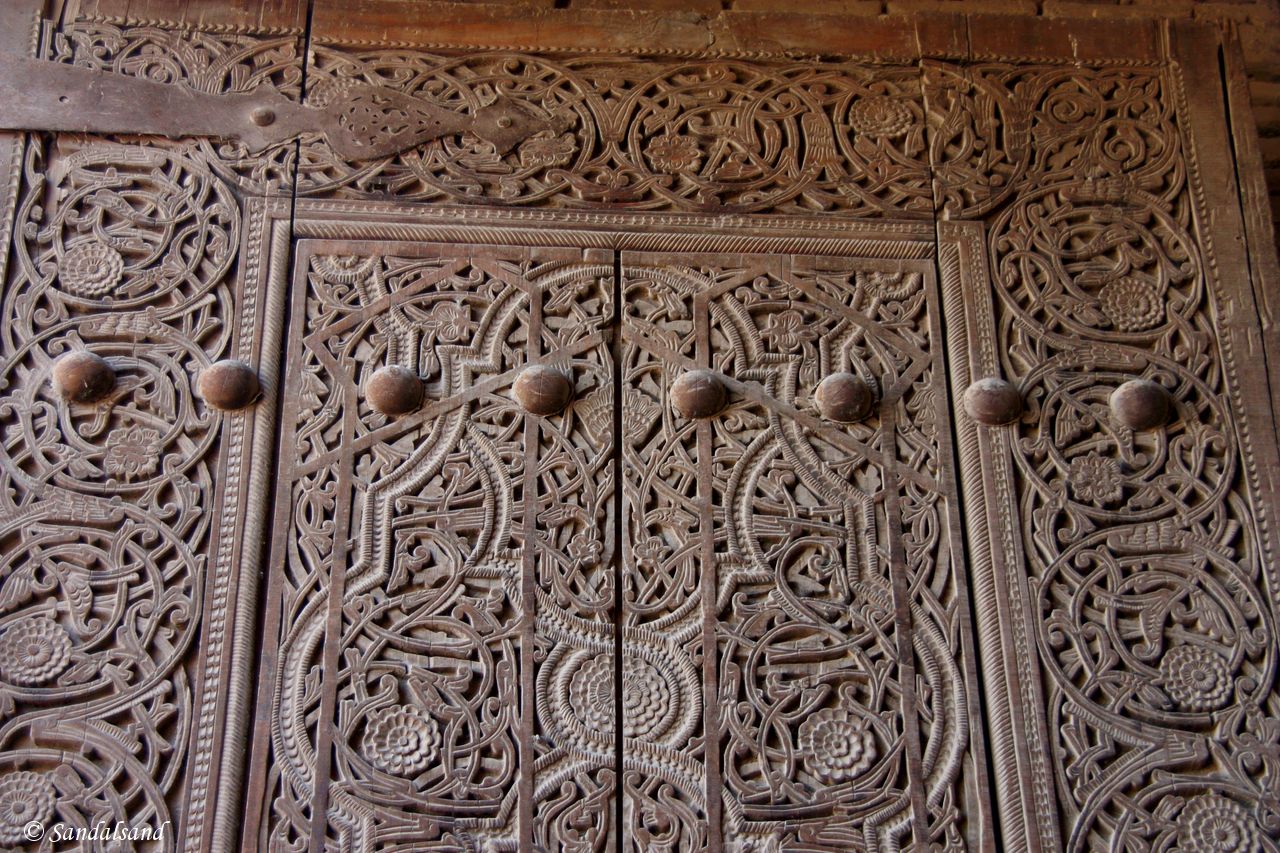
Inside the gates there are 50 monumental structures and 250 old houses contributing to making Itchan Kala a UNESCO World Heritage Site. Certainly, like all famous monuments on the famous Silk Road of Uzbekistan, they have had heavy restoration and reconstruction works in the course of the last century.
Some parts of the ancient city are quite touristy, almost unreal. Other parts are very genuine, with locals living in modest mud brick dwellings. This last part was very intriguing and the hospitality of the locals felt very real.
Minaret of Islam-Khodja
This minaret stands in front of a religious school (madrasah). It is the highest minaret (57m) and smallest madrasah in town. It was built as late as 1908-1910 in the tradition of the 11-12th centuries. Glazed mosaic in patterns of blue, white and green lined all the way to the top.
Kalta Minor minaret
This minaret is massive, fully 14.2m in diameter at the base. The name, “short minaret” derives from the fact that it is only 29 metres high. However, it was designed to be three times as high.
There are many explanations as to why work stopped. One is that the Khan was killed in 1855 after a battle with the Turkmen. Another story tells us that a Khan from Bukhara heard rumours of what was on the way in Khiva and ordered the building of an even higher minaret. In Khiva, the Khan was so furious that he threw his own architect off the top of the minaret.
Another explanation, put forward by our guide, was that the Khan’s prime minister was concerned about the cost of financing the minaret. He convinced the Khan to stop or else the workers and guards on top would be able to peer into the Khan’s harem.
Anyway, we may enjoy what was built, for the bright blue minaret is a true beauty – entirely covered with coloured glazed tiles.
Kunya-Ark Citadel
The “Old Fortress” is a walled part inside the larger walled city. It was built in the 17th and 18th centuries as the residencial palace for the khan himself. Here we find a mosque, residence, supreme court, reception, arsenal, harem and more.
We will return to yet another palace, but first we will have a look inside a very special mosque.
Djuma Mosque
This mosque with a flat wooden roof has no equal in Central Asia. It is upheld by rows upon rows of wooden pillars, 212 in number. The oldest date back a 1000 years, the majority are a couple of hundred years old. They all have encarvings with different patterns.
The three last complexes are located on or close to the central nave of Itchan Kala, a wide street lined with souvenir shops and stalls.
Tash Chauli palace
The next sight on our guided visit was this palace, the most elaborate and extravagant in Khiva. Let us have a look inside the harem.
Khiva was Muslim territory, and still is. The Khan was allowed to have only four wives, but there was no limit to how many concubines he would have. Here, in this palace we found a large rectangular courtyard. On one side we found the nice, decorated chambers belonging to the wives. Around the rest of the courtyard, and on the second level, the rest of the harem resided, i.e. the concubines. They came here at the age of fifteen and were thrown out when they reached twenty.
It was easy to believe in the story of the unfinished minaret, that having a look inside this compound would have been an irresistible view for any royal guardsman.
A country full of colourful tiles
That aside, Uzbekistan is full of the the ceramic tiles pictured below. The colours are hard to imitate today. In fact, original tiles have kept their blue colour more intact than newer ones used for restoration purposes.
Like Samarkand and Bukhara, and not least Tashkent, the city of Khiva (or Itchan Kala) has been restored heavily. Presumably the restoration and to some degree reconstruction efforts have been conducted in a proper manner, meaning that nothing has been added that was not there originally.
More than the other cities, I found that Khiva had kept its original idea. Most of all this feeling stems from the fact that the residential neighbourhoods looked so natural, so ancient and were in fact inhabited by real inhabitants even though they were living inside the walled part of a world heritage site.
The map
This is part of a series of articles from a journey to the Central Asian republics of Uzbekistan and Kyrgizstan in June 2014.
On the map below Leg 1 goes from Tashkent (A) west to Khiva (E) in Uzbekistan. Then a flight back to Tashkent (A) before Leg 2 to Bishkek (F) in Kyrgyzstan.
Read more
The chapters:
(1) In search of the ancient Silk Road
(2) The monumentalism of Tashkent
(4) Shakhrisabz and the birth of a nation
(5) The Emir of Bukhara and the lost camels
(6) The magnificent oasis of Khiva
(7) The fertile Fergana Valley
(8) Nomadic life on the mountain passes of Kyrgyzstan
(9) Bishkek and the valley of Ala Archa
In addition we visited five sites on the World Heritage List. The following article is my special entry from Khiva.
Images from Khiva
Click to expand and browse.

